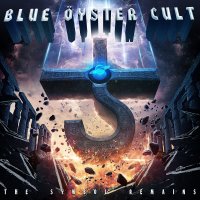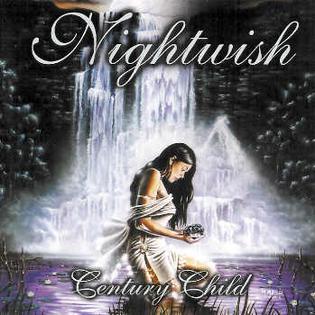 Blue Oyster Cult: The Symbol Remains
Blue Oyster Cult: The Symbol Remains
Nineteen years between releases makes it hard to approach news of a Blue Oyster Cult studio album without at least a hint of trepidation.
That becomes even more pronounced given I am a huge fan and consider the last good BOC album (depending on your definition) to have come out closer to 35 years ago.
I dropped the metaphorical needle without much expectation, but certainly a degree of hope.
* That Was Me hit exactly the right note as an opener. Riding a pummelling, ear-wormy riff straight into a memorable chorus in a manner reminiscent of up-tempo band classic tracks as
Cities on Flame and
Take Me Away, it makes two necessary statements: the band still can write hooks, and it has not gone at all soft. Eric Bloom snarling his way through a subversive John Shirley lyric and an abrupt musical left turn in the breakdown section just cement the message: the Old Gods Have Returned.
* The usual formula post-Bouchard brothers has been to alternate more metallic Bloom songs with melodic rock from Buck Dharma. Track two,
Box In My Head, continues the trend. Light, bright and uptempo, it’s powered by a clean power chord riff. Buck’s voice still carries that mild-yet-magnetic quality that is his signature and his guitar fills are as tasty as ever. But a too-wordy chorus melody bogs things down. It’s an insidiously catchy, inoffensive track, but if it’s going to be the album’s signature Buck song, it doesn’t bode well.
* Over the years, every member of the original Blue Oyster Cult took turns singing lead. But hearing new guy (as in only 14 years a member) Richie Castellano’s voice on
Tainted Blood was a bit of a shock. His singing is very good. And the song is incredibly well-played, produced and composed, with an absolutely massive chorus. Despite its very BOC subject matter about vampire love gone wrong, it feels more like Nightwish or Savatage at their most commercial, or something off a Joe-Lynn Turner era Rainbow album. It’s very good for what it is, but also very much a power ballad, and a departure from the eclectic, self-aware and insurgent Cult that fans have come to expect.
* Any suggestion BOC has gone Broadway is immediately shredded by the next track.
Nightmare Epiphany is a mad funhouse of a song; it's a dense, image-drenched Twilight Zone-narrative lyric delivered in understated Buck fashion over a deceptively jaunty bounce and stuffed with New Orleans blues soloing — with some surf guitar riffing liberally sprinkled in for good measure. Simultaneously light and dark, with the band in telepathic lockstep, its style harkens back to
Spectres-era heights.
* That necessary meld of the fresh and the familiar is maintained on the next track. Eric Bloom — sounding as good as he ever has — singing about conspiracy theories and alien abduction? What could be more BOC than that?
Edge of the World is a relentless mid-tempo throb, at once grooving and unstoppable. As accessible as
Tainted Blood, but more true to band canon, it’s a take leaning more to the latter days of the Cult legend (think
Veteran of the Psychic Wars, or
White Flags) with ridiculously catchy rhythmic and melodic hooks, complete with those ethereal signature BOC backing vocals and some subtle gothic keys.
* By the time the first chorus dropped on Richie singing track six, I was diving for the liner notes. Yes,
The Machine is a Castellano-penned track. He also wrote
Edge of the World and co-wrote
Tainted Blood and
That Was Me. A multi-instrumentalist, known for his Band Geek YouTube clips, this is Richie’s first BOC album. He’s clearly relishing the opportunity. Like his preceding tracks,
The Machine adds a commercial catchiness to the band’s ouevre and is a huge part of the energy and freshness of this album. The song is not going to be universally loved; it’s a pop rock song about cell phones after all, from a band best known for being dark and subversive. But it’s not out of character; sonically it is very much in keeping with tracks like
Burning For You, or 2001’s
Pocket with Richie’s more emotive vocals replacing Buck’s cool. More importantly, it’s smart, tightly played, fun, and hooky as hell.
* “Feelings, feelings, are somewhat symptomatic of societal abrasions that can form electric static” Train True (Lenny’s Song) is bizarre and obscure, both lyrically and musically — a hodgepodge of rock and hobo railroad country blues, with crazy tempo swings and a double-time chorus that harkens back to
The Red and the Black. It’s anachronistic flavour means it’s not going to exactly be accessible, but it is inventive, challenging and catchier than you might think at first blush.
* The less-commercial bent continues on the rocker
The Return of St. Cecilia, which features more shifts, a dirty AC/DC riff, some pumping Hammond organ, boogie piano flourishes and some nasty Buck playing. This is another Richie song, but one that sounds like it could have come from the Bouchard brothers in the band’s ‘70s heyday.
* Blue Oyster Cult was certainly a heavy music pioneer, but it’s questionable whether the band ever qualified as metal, at least by 2020 standards.
Stand and Fight says hold my sword. Powered by an ominous bass line, a chugging power chord riff, a dramatic instrumental mid-section and a chanting gang vocal chorus, the song is certainly heavy, and metal, at least by the standards of mid-‘80s Metallica or Manowar. It’s both simplistic and cheesy fun.
* One thing curiously absent from the album so far, has been the signature Buck Dharma song. For many it will arrive here in the form of
Florida Man, a sardonic, deceptively laid-back explanation of what is really behind those odd headlines coming out of the Sunshine State. It features both the the mildly unsettling pull of Buck’s vocals and the tasty melodic swoops of his lead guitar. This isn’t an obvious song, more one primed to sneak up people’s playlist upon repeated listenings.
* On its heels comes the other band box not yet checked: the epic track.
The Alchemist represents something we haven’t really seen on a BOC album since Albert Bouchard left the band. Six minutes of heavy riffing and gothic piano as Bloom spits out a Lovecraftian tale of murder and horror divided by an exquisite Iron Maiden-esque double-time harmony guitar interlude, the song is a worthy successor to tracks like
In the Presence of Another World and
Nosferatu and will likely be the album’s signature track for many fans.
* Secret Road fits its title: a mid-tempo driving blues-rock groove evoking dark backroads and darker tales untold. Nicely powered by drummer Jules Radino and bassist Danny Miranda (who deserve credit for giving the entire album a diverse and tight bottom end), this one is a vehicle for Buck’s emotional guitar leads, and comes with a surprisingly positive lyrical message. It should help satisfy anyone finding the album lacking in his signature stylings.
* If there is a filler track on the album, it’s probably
There’s a Crime. Not that it’s bad, it just kinda feels like somebody said, we need a straight-ahead rocker somewhere on here and this was offered up as the solution. It’s got some energy and thump and probably would cook live, although given the depth of the band’s archives, it’s an unlikely choice to pop up in many setlists.
* It turns out
Florida Man was a red herring. It may have taken 14 tracks to get there, but the signature Buck song here is the album closer, the too-brief
Fight. Opening with an ethereal riff this enigmatic song is at once as warm as a sunny autumn day and as bittersweet and elusive as mist over the ocean at sunset. In a minor key and augmented by those ‘cult’ background vocals (and, of course, a muted cowbell) it is an intensely satisfying close for fans who have gone two full decades without.
The Symbol Remains (both a line from the 1983 track
Shadow of California and a well-placed play on the band’s trademark cross-and-sickle logo) is more than a pleasant surprise. It’s a reason to celebrate for those still holding a candle for the eclectic American proto-metal pioneers.
Polished, diverse and remarkably deep, the album hits a lot of familiar BOC touchstones with the expected chops, but also a surprising amount of hooks, variety and verve. It’s hardly groundbreaking, but it is engaging and a lot of fun.
The Symbol Remains indeed.









